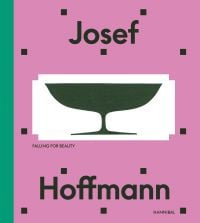
Josef Hoffmann – Art & History Museum, Belgium
10 Oct — 14 Apr 2024
Josef Hoffmann – Falling for Beauty
In October 1955, Viennese architect and designer Josef Hoffmann (1870-1956) travelled to Brussels on the occasion of the 50th anniversary of the Stoclet House, the project that came to be known as a “palace” and shaped his life and career. The enduring myth surrounding this building, as well as the particular product culture that emerged from the craftsmanship of the Wiener Werkstätte (Viennese workshops), has dominated the approaches to his practice to this day. The exhibition JOSEF HOFFMANN – Falling for Beauty wishes to offer a broader perspective by presenting Hoffmann’s artistry, for the first time in Belgium, as it develops through six decades of production.
The timeless beauty of Hoffmann’s creations not only shows his relevance as a historical phenomenon but also as a source of inspiration for different generations of students, at the Vienna School of Arts and Crafts and elsewhere, making him especially an international reference for postmodern practices. Considering the challenge of introducing Hoffmann in Brussels, this retrospective aims to provide a deeper insight in Hoffmann’s ideals and their evolution both due to and regardless of the diverse ideological and social circumstances in which they took form. The exhibition features a variety of well-known works together with rare pieces from private collections. The narrative is nourished by biographical details and new material on previously overlooked aspects; all to further extend our consideration of a leading figure in the field of modern design.
The sections of the exhibition are oriented around one or more architectural models ––including a new model of Hoffmann’s pavilion for the Werkbund exhibition in Cologne in 1914––that serve as epitomes and key references to consider constellations of furniture, objects, designs, textiles, and documents. In this regard, a juxtaposition of multiple narratives is proposed, covering every aspect of Hoffmann’s artistic production: architecture, design, decorative arts, scenography, writing and teaching. In addition, focus will go to his creative method as well as his use of colour.
The exhibition JOSEF HOFFMANN – Falling for Beauty at the Art & History Museum in Brussels provides an exceptional opportunity to discover an artist who understood beauty as an absolute requirement for individual and social transformation.
This project is developed in collaboration with the Applied Art Museum of Vienna (MAK) and takes as its point of departure the major scientific work presented in the exhibition JOSEF HOFFMANN: Progress Through Beauty (2020/2021), curated by Matthias Boeckl, Rainald Franz, Christian Witt-Dörring. The exhibition is a central event of the 2023 Art Nouveau year in Brussels.
***
Josef Hoffmann was born in 1870 in Brtnice, Moravia, then-part of the Austro-Hungarian Empire, today the Czech Republic. He was an architect and “all-round designer”— a description he fully lived up to. As an innovator, he was uniquely conscious of tradition. At the Academy of Fine Arts in Vienna, he studied under Karl Freiherr von Hasenauer and Otto Wagner. He was among the founders of the Vienna Secession and co-established the Wiener Werkstätte (1903-32), his most-noted achievements including the Purkersdorf Sanatorium (1904-05) or the Palais Stoclet in Brussels (1905-11). Josef Hoffmann’s long life spanned more than eight decades of which he spent at least six active as an artist. Until his death in 1956, at the age of eighty-five, he lived and worked through five succeeding political systems while influencing hundreds of designers to the present day. As he fell in and out of fashion, Hoffmann always remained true to his individual and high creative standards.
Please log-in or create an account to see your recent items.